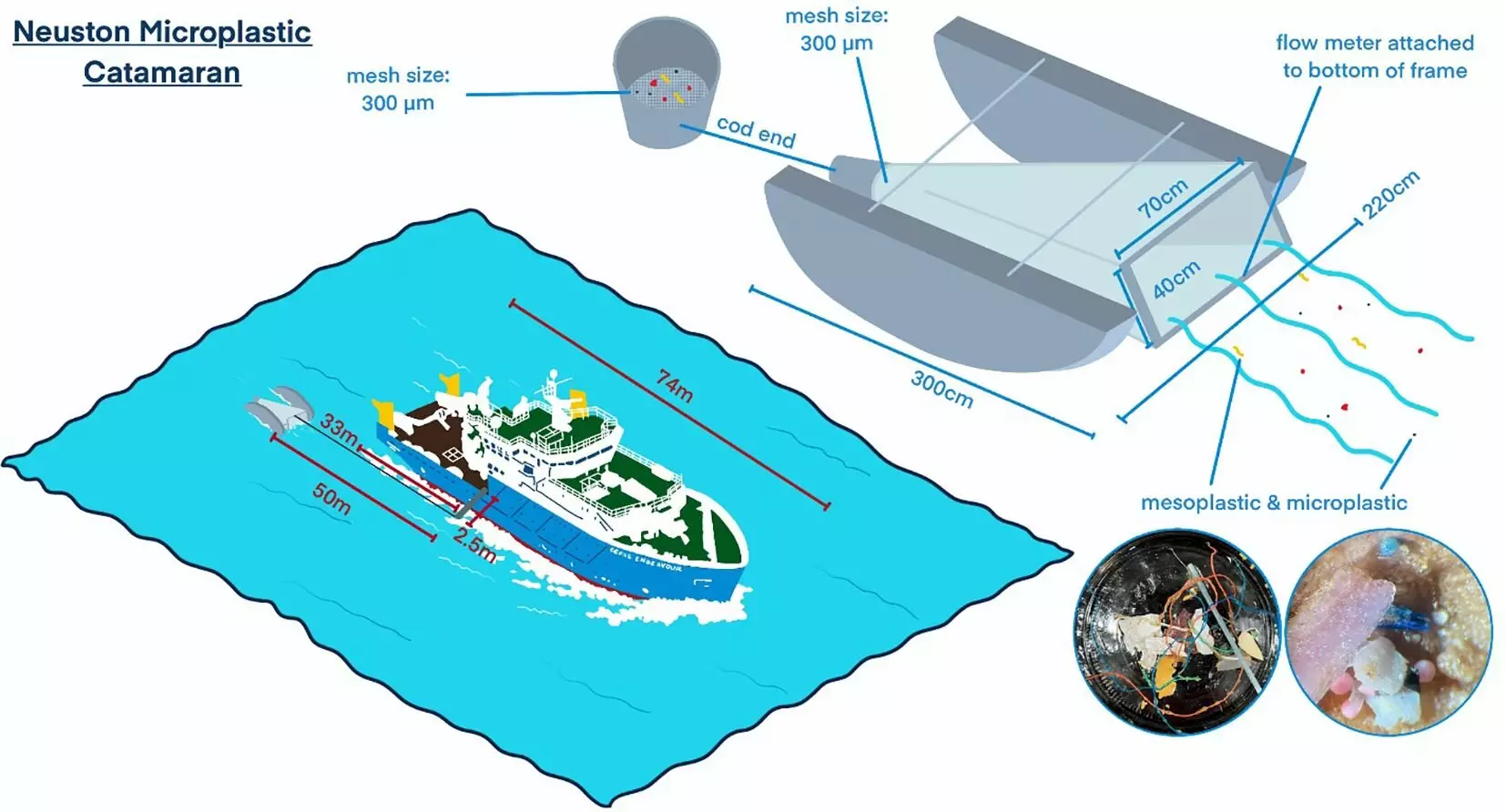Microplastic pollution poses an urgent threat to marine ecosystems, often embodied in the heartbreaking images of wildlife encased in plastic debris or microplastics camouflaged within the sands of seemingly untouched beaches. With annual contributions of plastic waste reaching an alarming figure of up to 12.7 million tons entering our oceans—thanks to both terrestrial runoff and marine activities like fishing, shipping, and aquaculture—the reality of this issue is starkly evident. Yet, the visible manifestation of microplastic pollution diverges significantly from the aggregate quantities evident in scientific data. Evidence suggests a presence of microplastic “sinks,” where these pollutants accumulate beneath the surface, revealing a complex and troubling reality hidden from plain sight.
Recent research published in *Frontiers in Marine Science* has illuminated one such sink located in the North Sea. Led by Dr. Danja Hoehn and her dedicated team at the Center for Environment, Fisheries and Aquaculture Science in the U.K., this investigation involved meticulous data collection using an innovative Neuston Microplastic Catamaran in 2022. This floating vessel, equipped with mechanical flowmeters and specialized mesh netting, captures microplastics before they can sink to the ocean floor, providing accurate measurements of these pollutants on the water’s surface.
The study unearthed particularly elevated concentrations of microplastics in the Southern Bight of the North Sea, where figures soared beyond 25,000 pieces per square kilometer, compared to markedly lower counts in adjacent regions such as the offshore waters of Scotland (around 4,500 items/km²) and the north-east Atlantic (approximately 3,200 items/km²). This alarming data underscores the vital necessity of probing beneath superficial evaluations of oceanic health, demonstrating that geographical disparities in microplastic concentration paint a more nuanced picture of marine pollution.
Dissection of the microplastic composition revealed that the vast majority of these pollutants—up to 5 mm in size—were primarily fragments of polyethylene (67%), commonly found in everyday objects like shopping bags and beverage containers. Other significant contributors included polypropylene (16%), seen in packaging and textiles, and polystyrene (8%), often associated with disposable products and durable home appliances. Though larger plastic remnants, classified as mesoplastics (5 to 25 mm) and macroplastics (over 25 mm), were present in reduced quantities, they primarily resulted from the degradation of larger plastic items. Mesoplastics and macroplastics emerged at concentrations around 2,000 and 1,000 items/km², respectively.
Despite the U.K.’s ban on microbeads in personal care products since 2018, these minuscule pollutants remain alarmingly prevalent, suggesting a transnational transportation system of plastics facilitated by ocean currents. The research identified 11 colors among the marine litter, predominantly white, which can be traced back to common plastic bags. This revelation serves as a reminder of the pervasive nature of plastic pollution, as it infiltrates even the most isolated marine environments.
While the findings reveal reaching concentrations that are troubling on a local scale, even higher concentrations have been documented elsewhere—such as the staggering 254,000 items/km² near northwest Spain in 2017. This disparity invites a critical examination of the oceanic health crisis driven by plastic waste across various regions, highlighting the necessity of establishing effective measures to combat this insidious problem. Despite the U.K.’s comparatively lower concentrations, the presence of microplastics underscores the expansive reach and magnitude of this environmental crisis, as the currents enable the migration of pollutants from distant shores.
The fight against microplastic pollution is not without its ongoing efforts. Initiatives at both national and international levels are underway. The U.K. has rolled out its Marine Strategy, which aims to develop robust indicators measuring microplastic levels in marine sediments. Meanwhile, the North-East Atlantic Environmental Strategy is focused on curbing the influx of marine litter, while the United Nations Environmental Agency is advocating for a legally binding accord to eradicate plastic pollution by 2040.
As humanity’s reliance on plastics exceeds 400 million tons annually, safeguarding our oceans demands meticulous attention and proactive strategies. Understanding the intricacies of plastic contamination is vital in orchestrating an effective response to guarantee a healthier marine environment for generations to come. The insights gained through rigorous scientific research will be essential tools in shaping our collective efforts to combat this profound ecological challenge.


Leave a Reply